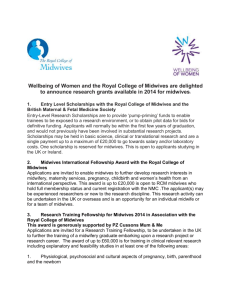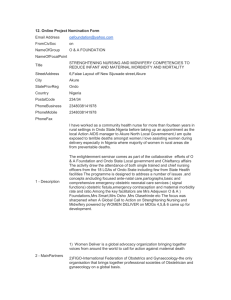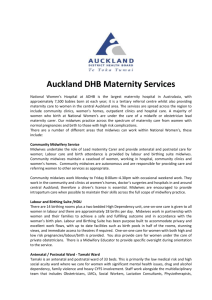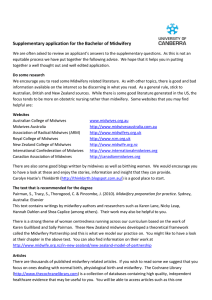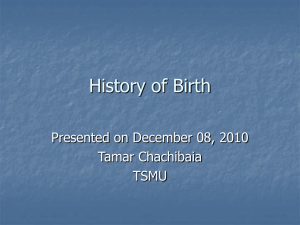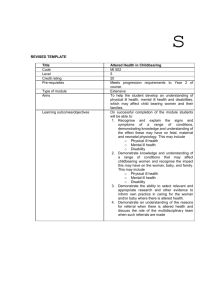Midwifery Education and Accreditation System in
advertisement
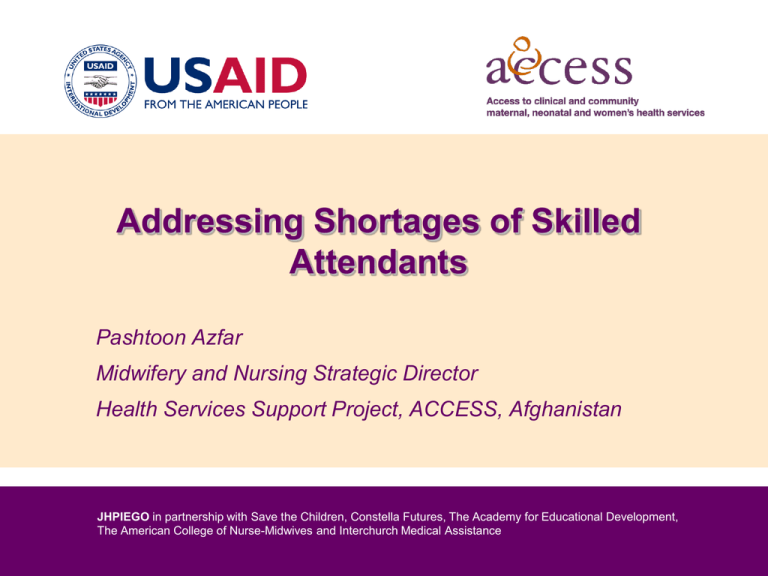
Addressing Shortages of Skilled Attendants Pashtoon Azfar Midwifery and Nursing Strategic Director Health Services Support Project, ACCESS, Afghanistan JHPIEGO in partnership with Save the Children, Constella Futures, The Academy for Educational Development, The American College of Nurse-Midwives and Interchurch Medical Assistance Objectives of the Presentation At the end of the presentation, participants will be able to: Describe the midwifery pre service education in Afghanistan Discuss the midwifery school accreditation program in Afghanistan Explain what results have been achieved and what challenges we face 2 Introduction High maternal mortality 1600 MD / 100 000 LB Low skilled birth attendance < 10% (2003 MICS) Shortage of skilled attendants 467 midwives in country in 2002 MoPH and stakeholders developed a preservice midwifery education program Human workforce development Policy development – creating an enabling environment and the appropriate authority and regulatory system Planning – How many midwives do we need? Where do we need them? Selection – Community-focused and linked to national criteria Recruitment – Which health facilities need midwives (active or planned)? Education – Competency-based and skill focused Deployment – Planned from time of recruitment/selection, maintain community link during training Supervision – Professional socialization, integration with team and actual work patterns 4 Education program Selection Mostly from rural areas based on MoPH policies Collaboration with national, provincial, local health authority and communities in selection and recruitment Education Competency-based education curriculum re-designed Skill focused according to definition of Basic EmOC 24 month fit-for-purpose education Knowledge and skills of teachers and clinical preceptors updated Accreditation system established 5 Education program #2 Deployment Midwives deployed to community facility they were recruited from Working within a defined Basic Package of Health Services Supportive supervision Linked with provincial Afghan Midwives Association In 6 years(2003-2009) almost 2000 new competent midwives graduated 6 Output and Achievement of MWE Programs Currently studying Enrolled Graduated Drop-outs % Graduated Deployed/ Employed % Deployed/ Employment of graduated Currently working (as of May, 2009) % currently working of graduated Currently working of deployed/ employed 167 1232 1103 129 90% 890 81% 754 68% 85% CME 509 886 858 28 97% 785 91% 694 81% 88% TOTAL 676 2118 1961 157 93% 1675 85% 1448 74% 86% Type of Program IHS Accreditation Results Progress in compliance of national midwifery education schools with accreditation standards - Overall compliance by province 2004 - 2008 Baseline Non-Binding Binding Re-Binding 100% 90% 80% 70% 60% 50% 40% 30% 20% 10% da k W ar ha r ul Ta k iP an Sa r m an g rw an Sa a Pa kt iy Pa ar r ar h an g Lo ga Ku nd uz La gh m an os t Kh a pi s Ka ha r nd a bu l Ka ira t Ja wz ja n H ya n Ba m Ba lkh an gh l is Ba dg h Ba Ka N Ba da k hs ha n 0% Assessment of maternal health utilization indicators In provinces with midwifery schools Increase in women accessing ANC by almost 20% Increase in women delivering with a skilled birth attendant by 40% 10 Challenges Security Retention Supervision post-graduation – are midwives under worked? Or over burdened and not able to focus on maternal and newborn health? Cultural, geographic isolation of women 11 Final Words “I am happy with the midwife. Previously there was no midwife in our village and women were suffering bleeding and their children were dying. Now thanks to God, we have got a midwife and since have not seen a pregnancy death.” “In the beginning, people thought that I might be a dayee (traditional birth attendant) and would not be effective. At present, they know me as a women’s specialist and they respect me and say that I solve their women’s problems.” 12

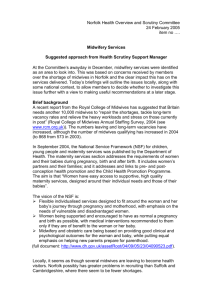
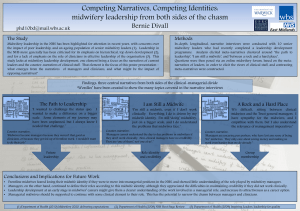
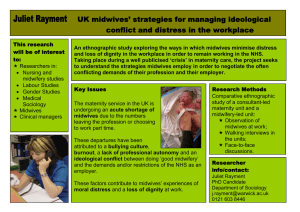

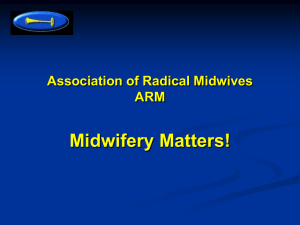
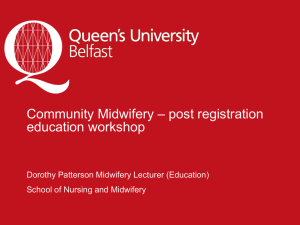
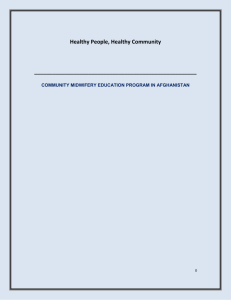
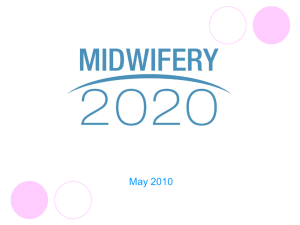
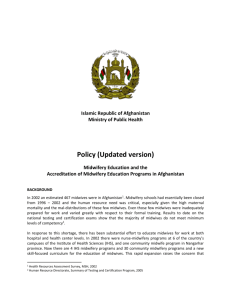
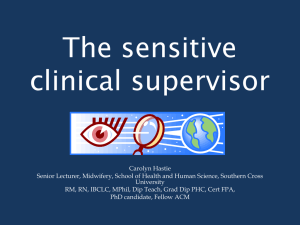
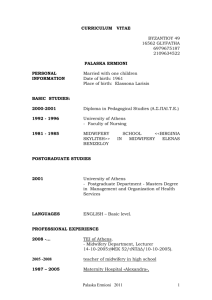
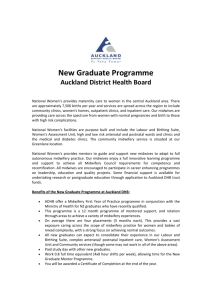
![Letter to MPs re: maternal mental health report Dear [Name of MP] I](http://s3.studylib.net/store/data/006839335_1-7d7b3127aade7ad6d126565942ce75c1-300x300.png)
